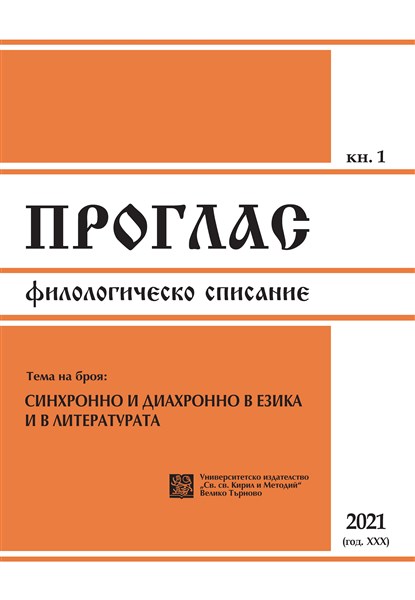
We kindly inform you that, as long as the subject affiliation of our 300.000+ articles is in progress, you might get unsufficient or no results on your third level or second level search. In this case, please broaden your search criteria.


This article presents the most relevant information on the history of dialectological research in Poznań and its context, the academic achievements of the Poznań University enjoyed in cooperation with the Poznań Society for the Advancement of Arts and Sciences. The two institutions have greatly contributed to the development of Polish studies including dialectology.The presented information pertains chiefly to the relatively unknown accomplishments of the dialectol-ogy team, for example a phonographic archive containing recordings of utterances of informants born in the second half of the 19th century (the oldest interlocutor was born in 1855). Together with contempo-rary recordings, the collection contains approximately 3,700 hours of rural speech. The entire archive is available in a digital version.The text is supplemented with information about the history of Poznań dialectology and the contemporary activities of the team of the Dialectology Workshop at the Poznań University, mainly lexicographic works
More...
This article presents the most relevant information on the history of dialectological research in Poznań and its context, the academic achievements of the Poznań University enjoyed in cooperation with the Poznań Society for the Advancement of Arts and Sciences. The two institutions have greatly contributed to the development of Polish studies including dialectology.The presented information pertains chiefly to the relatively unknown accomplishments of the dialectology team, for example a phonographic archive containing recordings of utterances of informants born in the second half of the 19th century (the oldest interlocutor was born in 1855). Together with contempo-rary recordings, the collection contains approximately 3,700 hours of rural speech. The entire archive is available in a digital version.The text is supplemented with information about the history of Poznań dialectology and the contemporary activities of the team of the Dialectology Workshop at the Poznań University, mainly lexicographic works
More...
This work connects with the dialectological aspect of linguistic geography. The analysed material consists of inventory ledgers kept in Wielkopolska in the second half of the 18th century for nobility possessions. It is assumed that the then regional variety of the Polish language spoken in Wielkopolska was geographically diverse and this diversity was anything but accidental. It was affected by the education of the communication actors (including the writers) and their command of the literary Polish language, dialectal influences, impact of foreign languages, presence of archaic and innovative elements. This diversity is reflected in inventory ledgers; an analysis thereof was aimed at excerpting examples of lexical variants. This work contains 4 selected examples: ‘bogaty chłop’ [a wealthy farmer], ‘ziemniaki’ [potatoes], ‘mała izba’[a small room], ‘niebieski’ [blue]. Maps have been created for them. The analytical part is followed by generalisation of the variability in the surveyed sources (types of variability, its sources, levels, types of variants).
More...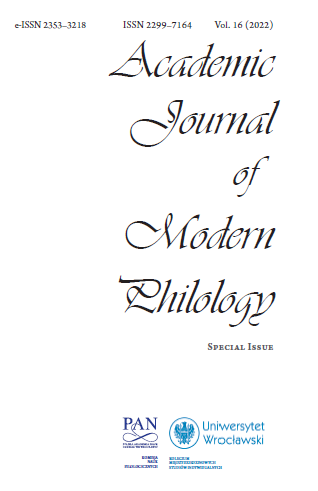
The subject of this article is the machine translation (MT) of the German terms Lehrbefugnis (“authorisation to teach”) and Lehrbefähigung (“teaching qualification”) into Polish. After highlighting the role of these terms in international academic careers, their semantics are described and basic information about the principles of MT are outlined. The structural equivalents of German terms in Polish and typical mistakes made by translators are also discussed. The analysis concludes that translators are not yet able to translate such specific terms correctly, therefore further work (also of a linguistic nature) is necessary to improve the quality of translations, e.g. by supplementing lexical resources.
More...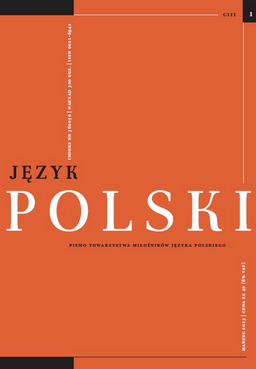
The aim of the article is to describe the first separate dictionary of Polish veterinary terminology, published two times in 1876. The first time as a supplement to Uzupełnienie słownika łacińsko-polskiego wyrazów lekarskich (Supplement to the Latin-Polish Dictionary of Medical Terms) of 1876 and the other time as an offprint of this supplement. The sixteen-page dictionary has 297 foreign-language entries (mainly Latin and German) with Polish equivalents – single terms or in synonymic series. The Polish material comprises a total of 303 terms. These are mainly multi-word names (172). Polish veterinary terms are predominantly native; borrowings or derivatives from them rarely appear among them. The terms collected in Słowniczek refer to various animals (they are most often names of their diseases), however, terms concerning horses predominate. The material in the dictionary is provided with numerous (usually short) annotations. Most of them (over 100) concern Polish terms. Some of these comments are geographical and stylistic qualifiers. The majority of the entries from Słowniczek (283) were repeated in the most important medical dictionary of the 19th century published in 1881.
More...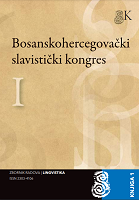
The main aim is showing the difference in expressing of male and female in dictionaries of Polish and Bosnian. Observation is based on contemporary Polish and Bosnian dictionaries. Information about gender is contained in different elements of lexicographic description, f.e. grammatical form of the word, way of the definition, meaning and context of usage. Comparison of Polish and Bosnian dictionaries shows that the extent of asymmetry in this two Slavic languages is different. Bosnian language has the word derivation system with a high degree of symmetry in masculine and feminine forms, which can not be said about Polish language. You can express the opinion that the woman and her professional activity are more visible in Bosnian than in Polish.
More...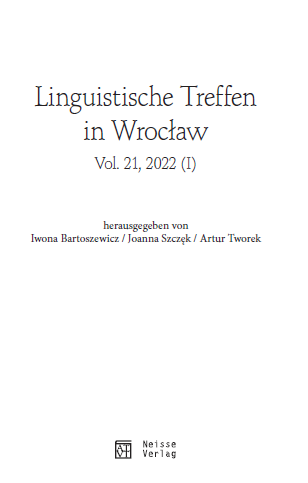
In this article subtitling and the resulting from it translation strategies are analysed. The article puts the main emphasis, on the one hand, on the technical restrictions, the resulting from it need to shorten, condense and simplify the text, and the translation strategies used for this purpose according to Gottlieb, Chesterman, Tomaszkiewicz and Belczyk, e.g.: deletion, condensation, omission, numbers, decimation, paraphrasing, simple syntaxis, etc. On the other hand, it deals with the translation of culture-related components, based on such strategies: omission, literal translation, borrowing, adaptations, substitution of Culture-Specifics, generalization, translation of black humour, explications/explanations. The German-Polish subtitling of the movie “Er ist wieder da” (2015) served as a case study, from which many examples illustrate the discussed phenomena. The aim of this paper is to examine the translated linguistic-cultural-comic triad, taking into account the strategies used in translation. Based on the multidimensional (at syntactic-semantic-pragmatic level) analysis of the original and its translation, these results point to possible that the translator faced seemingly insurmountable hurdles. In order to translate equivalently, he had to make use of many different word combinations. Thanks to numerous examples of text condensation strategies, it can be stated that many movie scenes can be translated intersemiotically. Many omissions that were made could be compensated without problems by means of image and/or sound, so that it is unnoticeable for the viewer at semantic-trans-cultural level.
More...
The designations of systemic doctrines are labels and landmarks in the public debate: in relation to them, its participants and observers define their political identity, at the same time projecting ideas about the identity of their opponents. Therefore, their semantic content differs depending on who and for what purpose calls these designations in the public space. This is the main reason why such names have become the subject of attention from researchers interested in language as an element of social life. One of such designations is capitalism – one of the key concepts of the Polish political transformation. However, this designation and the concept behind it were the subject of linguists’ attention to a lesser extent than it might seem. I would like to fill this gap. My aim was to present the shaping of the concept of capitalism in Polish in various historical periods. I analyzed the linguistic material taken from Polish encyclopedias and dictionaries. Being aware that the selection of sources is not representative of the entire Polish language, I treat the results of the analysis as an introduction to further research. I referred to the concept of the linguistic image of the world. Capitalism appears for the first time in Polish encyclopedias and dictionaries at the turn of the 19th and 20th centuries. From that moment on, the scope of definitions and the number of their semantic components constantly increased, and their final number, type and hierarchy differed depending on the historical period in question. The two great turning points in the profiling of the concept of capitalism are the years 1945 and 1989. This allows us to formulate a thesis about the important role of encyclopedias and dictionaries in petrifying a specific resource of knowledge and legitimizing the political regime.
More...
Those who fear the decline of the German language use the following argumentation: countless foreign words in the German language system, patchwork-like language use with all its linguistic phenomena, such as abbreviations and short forms, multilingualism, code-switching, bricolage, hybrid formations and borrowings, grammatical reduction and deviation from grammatical norms, codification of the language. Many of these language-changing processes are explained and even justified by globalisation and the enormous mobility of people in today’s world. There is somewhat less understanding of the use of vulgarisms not only in everyday life but also in the media. What was unthinkable a few decades ago has become reality today: Vulgarisms permeate public language and are even used by celebrities. While individual swear words no longer seem to shock, their accumulation in rock and rap lyrics is completely rejected by many or bypassed as a taboo subject. In his monograph, which is dedicated to a semantic and structural analysis of vulgarisms in Germanand Polish rap and rock lyrics, Krystian Suchorab deals with the use of vulgarisms and points out the following aspects, among others: vulgarisms and aggression in music; lyrics as a form of communication; semantic and structural analysis of vulgar lexemes in German and Polish rap and rock songs. With this contribution, the author breaks a taboo and enriches with his research the already existing, but not particularly extensive literature on the topic of vulgarisms. The topic still seems to be up-to-date and worth further research.
More...
In the article, we propose the inclusion of methods used in linguistics and literary studies in the analysis of biographical narratives of representatives of the Polish community in Argentina collected by the KARTA Centre and the History Meeting House as part of the Oral History Archive. The use of methods developed on the basis of these disciplines in the study of oral accounts of the Polish community in Argentina may become an important step not only broadening the research perspective, but above all, bringing closer a fuller understanding of the Polish diaspora in the country on La Plata.
More...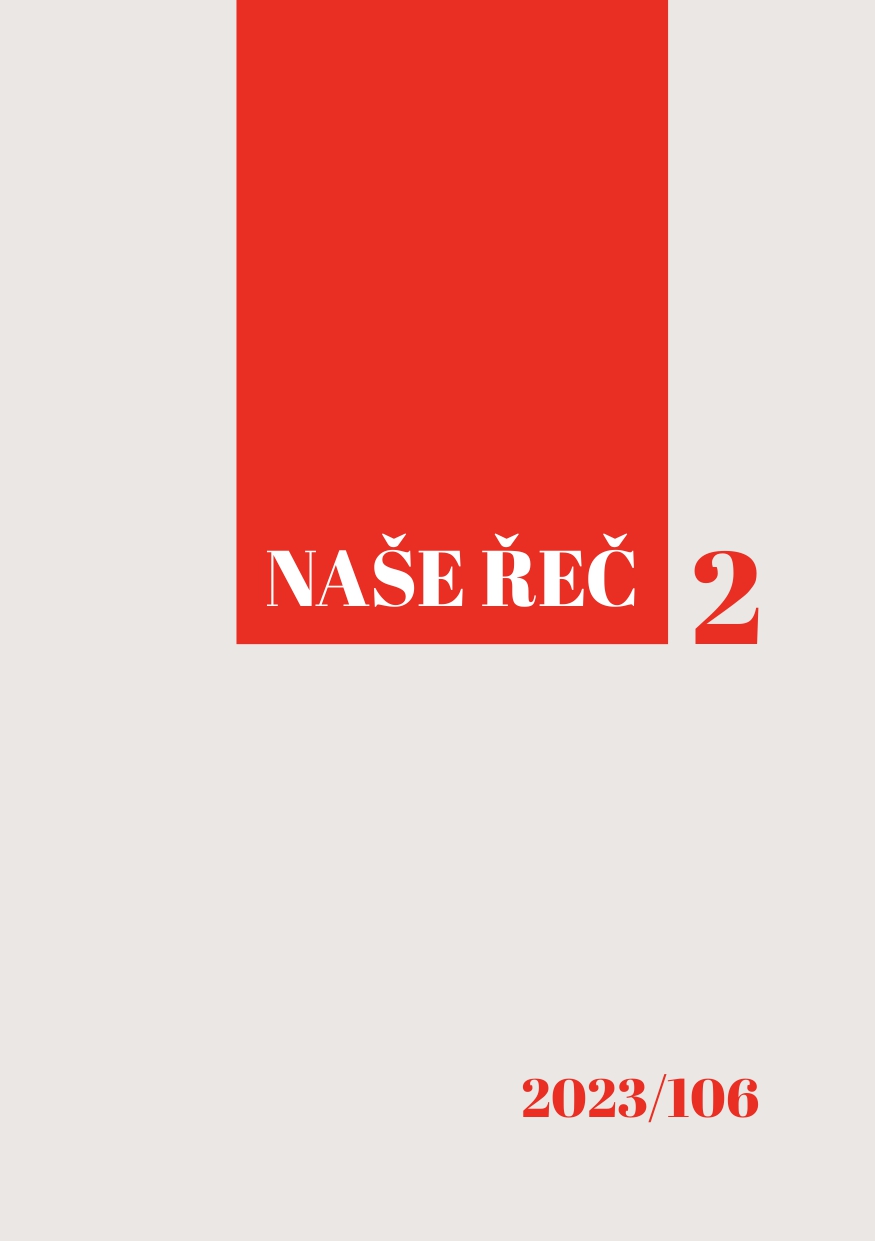
The present study, couched within the framework of Löbner’s Concept Types and Determination theory (CTD) and relying both on corpus data and the questionnaire method, attempts to provide some evidence for the claim that there is a growing tendency in contemporary informal spoken Czech to use the emerging definite article ten with definite associative anaphora (DAA). Just like its Western Slavic cognates, the distance-neutral demonstrative ten appears to manifest characteristics typical of definite articles across languages (cf. Ortmann, 2014; Czardybon, 2017; Dvořák, 2020). One of these characteristics is the spreading of ten to contexts situated between pragmatic and semantic definiteness on Löbner’s definiteness scale (Löbner, 1985; 2011). DAA is part of these contexts. However, as the present study shows, marked differences exist between the three sub-types of DAA as defined by Löbner with regards to their willingness to accept ten. These are, respectively, the “part-whole,” the “relational” and the “situational” sub-type. Other factors must also be taken into account, such as the speaker’s emotional involvement and competing interpretations of the occurrence of ten.
More...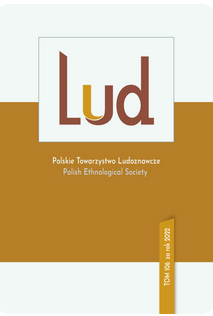
The aim of this paper is an analysis of linguistic practices and ideologies of the descendants of the Polish migrants who came to the south of Brazil in the late 19th century. They were peasants, farmers, mostly illiterate, originating from various areas of the then Polish Kingdom and Eastern Galicia. On the basis of materials from ethnographic field research conducted in 2015–2021 in one of the villages in the state of Paraná, I try to answer the questions of what Polish language is for Brazilians of Polish origin, how it is used, valued and passed down from generation to generation. In my analysis, I use key concepts from linguistic anthropology – linguistic practices and ideologies that I place in the context of historical and contemporary language policies in Brazil.
More...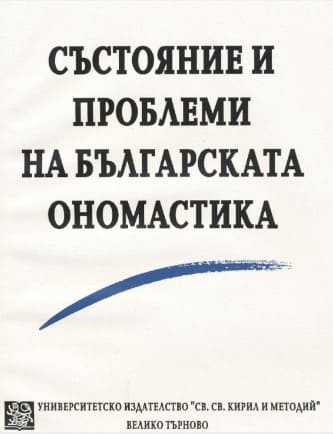
The paper presents the names of animals recorded in the contemporary sur names of Bielsk Podlaski inhabitants. The analysis showed that the most com mon as the word-formation basis of these surnames were the names of birds (Kulik, Puhacewicz) and the names of mammals (Bober, Wolczuk). The names of insects (Pszczoła, Szerszenowicz) and fish (Akuła, Brzana) are less popular. Other names appear sporadically (e.g. Smoktunowicz, Wąż). The material features surnames from Polish (Sikora, Śledź), Eastem-Slavonic (Krot, Soroka), sometimes also Lithuanian (Ancuta, Gulbinowicz) appellatives. Considering word-formation aspect the surnames which are equal to appe llative words predominate, while there are fewer surnames resulting from para digmatic or suffixic derivation. In the last group there are the most surnames with patronymic suffixes.
More...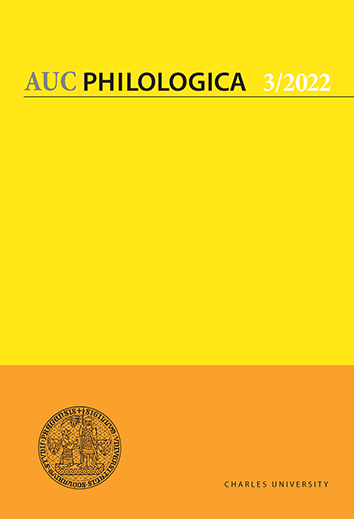
For years, the theory of word formation in contemporary German has been a fixed part of the course Lexicology and Word Formation in Contemporary German at the Bachelor of German Language Studies at the Department of Germanic Studies of the Faculty of Arts, Charles University. The author describes the established practice and presents types of exercises designed to promote the development of passive vocabulary and to provide insight into the systemic relations of German word formation.
More...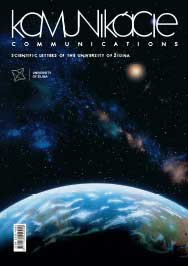
The article deals with lexical units of homonymic character functioning on the inter-linguistic level in Slavic languages. The emphasis is put on interlingual homonyms with the origin in the semantic relation of polysemy. In order to provide a theoretical background, the differences between homonymy and polysemy are highlighted. Moreover, homonyms are defined and classified taking into account their etymology. The principal part focuses on the relation: a polysemic homonym in one language - a monosemic homonym in the other one and vice versa.
More...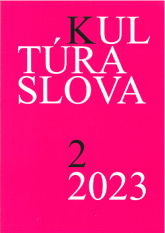
Polievka oddávna bola a doteraz je v slovenskej kuchyni tradičným jedlom. Zaujímala v nej vždy významné miesto. Na dedinách, tie gemerské nevynímajúc, bola často jediným vareným jedlom dňa. Jedávala sa ráno na raňajky, na obed i na večeru. Nie nadarmo sa v Revúcej hovorilo, že poliauka je fundament.
More...
Slovo brownie/brownies pomenúvajúce druh sladkého koláča nie je v slovenčine nové, bežne sa používa v písomnom aj ústnom jazykovom prejave. Stretávame sa však s dvomi podobami na označenie jednej konkrétnosti – brownie aj brownies. Otázky týkajúce sa tohto slova sme zaznamenali aj v jazykovej poradni JÚĽŠ SAV.
More...
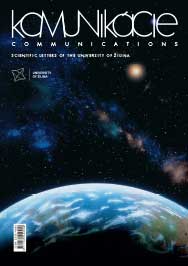
The article deals with words of English origin (with the terminal suffix -ing) which have penetrated into contemporary Slavic languages. The general introduction into the characteristics of -ing lexemes in the English language as well as principles of lexical unit adaptation are provided. The main emphasis is put on orthographic, morphological, word-formation and semantic adaptation of the lexical units in the Slovak, Russian and Czech languages.
More...